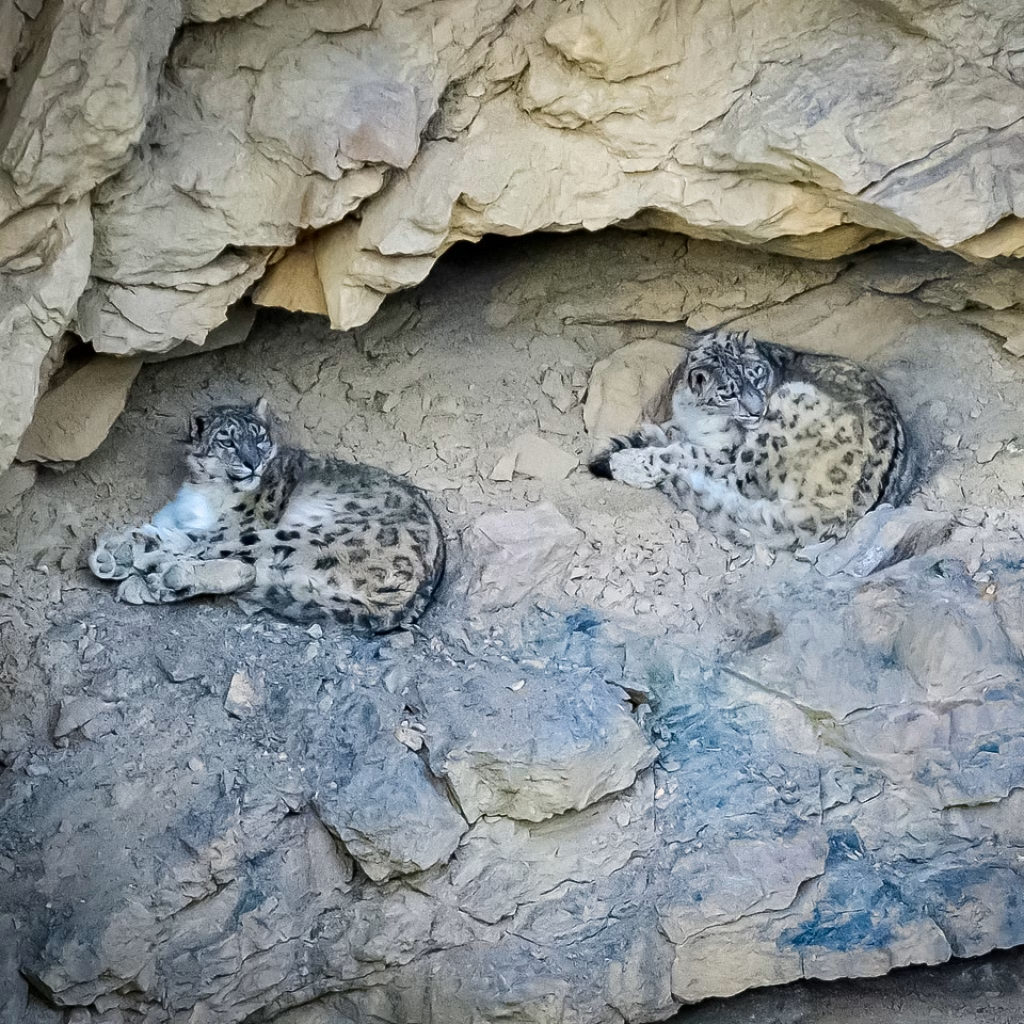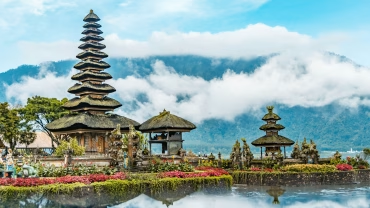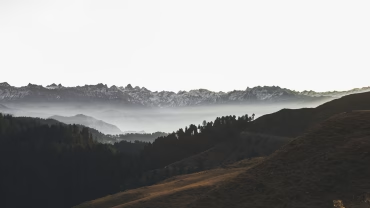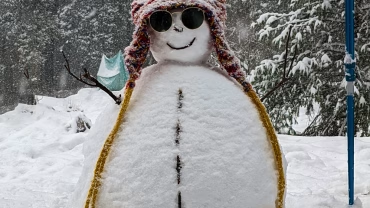Understanding the Snow Leopard
The snow leopard (Panthera uncia), commonly found in the mountainous regions of Central and South Asia, is renowned for its unique adaptations and elusive nature. These magnificent creatures are primarily found in the rugged terrain of the Himalayas, making India one of the prime locations for a snow leopard expedition. Its thick fur, long tail, and distinctive rosettes are not just for aesthetic appeal; they serve essential functions in helping the snow leopard survive in harsh, cold environments, where temperatures can plummet significantly.
Snow leopards are built for life in the extreme cold. Their oversized nasal cavities facilitate heat conservation while breathing in the frigid air. Additionally, their fur has a thick undercoat that insulates them during the winter months. The long, muscular tails aid in balance as they navigate steep and rocky cliffs, while also providing a means to cover their faces against harsh wind conditions and to express interpersonal communication within their species.
The snow leopard is primarily a solitary hunter, relying on secrecy and stealth for capture. Unlike some big cats, they can thrive at high altitudes, showcasing their unique hunting techniques, which include ambushing their prey, often from above. Their diet primarily consists of ungulates, such as blue sheep and ibex, and they play a crucial role in regulating these populations, making them a keystone species in their ecosystem. As apex predators, snow leopards help maintain the health of their habitats by controlling herbivore populations, which in turn promotes biodiversity.
Conservation efforts are vital for the survival of the snow leopard, especially with the increasing threats posed by habitat loss and poaching. Expeditions focused on snow leopards in India provide opportunities for education and awareness, promoting the importance of protecting these remarkable animals and their habitats. Through these efforts, it becomes evident how crucial the snow leopard is not only to its environment but also to initiatives aimed at preserving the delicate ecological balance of the Himalayan region.

Best Time for a Snow Leopard Expedition
When planning a snow leopard expedition in India, timing plays a crucial role in maximizing the chances of witnessing these elusive creatures in their natural habitat. Generally, the ideal months for snow leopard spotting span from November to March. During these months, the weather conditions are most favorable, and snow leopards are more active. This period coincides with the winter season in the high-altitude regions of Ladakh, where the snow leopards primarily reside.
In November, temperatures begin to drop significantly, providing excellent opportunities for wildlife enthusiasts to embark on their expeditions. The biting cold can be challenging, with average daytime temperatures hovering around -5°C to 5°C. However, fewer tourists in the region during this month increases the chances of encountering these magnificent cats in relative solitude. December and January are characterized by heavy snowfall, transforming the landscape into a breathtaking snowy wonderland. While temperatures can plummet to -15°C or lower at night, snow leopards are often spotted during the day, taking advantage of the vast visibility provided by the snow.
As winter progresses into February and March, conditions gradually begin to warm up, yet snow leopards remain active. These months see a slight increase in tourist activity, yet visitors can still take advantage of optimal spotting conditions. During this period, snow leopards may often be seen basking in the sun or traversing the rugged terrain, providing awe-inspiring experiences for adventurers on their snow leopard expedition in India. Ultimately, selecting the right time for your expedition is imperative for a successful wildlife viewing experience.
Choosing the Right Expedition Tour Operator
When embarking on a snow leopard expedition in India, selecting the right tour operator is crucial to ensure a safe, enjoyable, and enlightening experience. Given the elusive nature of the snow leopard and the challenging terrain of its habitat, a reputable operator should have safety protocols in place to manage potential risks associated with trekking in remote areas.
One key criterion for evaluating tour operators is the experience and expertise of their guides. Knowledgeable guides are essential not only for tracking the snow leopard but also for providing insights into the unique ecosystem of the region. Look for operators that employ local guides who possess a deep understanding of the fauna and flora, as well as the culture of the areas being explored. A good guide can elevate the expedition experience by sharing valuable information while ensuring the physical well-being of all participants.
Additionally, conservation partnerships should be a significant consideration when choosing a tour operator. Operators that actively engage in conservation efforts help to protect the snow leopard and its habitat. Research providers who collaborate with wildlife organizations or contribute to research initiatives, as such partnerships can enhance the educational aspect of the expedition while promoting sustainable tourism practices.
Furthermore, customer reviews and testimonials play a pivotal role in decision-making. Reading feedback from previous participants can offer insights into an operator’s reliability, the quality of their services, and overall satisfaction. Look for operators that have consistently positive reviews, demonstrating a track record of successful snow leopard expeditions in India.
By focusing on safety measures, the expertise of guides, conservation ethics, and customer feedback, you are more likely to select a tour operator that will make your snow leopard expedition both memorable and enriching.
Essential Gear and Equipment for Your Expedition
Embarking on a snow leopard expedition in India requires careful consideration of the equipment and gear to ensure both comfort and safety during the journey. The unique environment of the snow leopard’s habitat, which consists of rugged mountains and harsh weather conditions, calls for specialized gear tailored to these challenges.
First and foremost, photography enthusiasts should prioritize a high-quality camera equipped with a lens of at least 400mm. This is essential for capturing the elusive snow leopard in its natural habitat from a distance without disturbing its behavior. Additionally, having a tripod can be beneficial for stability in the often windy conditions of mountainous terrain.
Warm clothing is one of the most crucial aspects of preparing for a snow leopard expedition in India. Layering is recommended; breathable base layers, insulating mid-layers, and durable outer shells will protect against both cold and moisture. Thermal socks, fleece hats, and gloves should also be included to safeguard extremities against the chill during early morning or late evening wildlife sightings.
Suitable footwear is another vital component. Hiking boots with good grip and ankle support are essential for navigating rocky paths and steep inclines. Waterproof options are preferable to keep feet dry in unpredictable weather. Furthermore, trekking poles can provide added balance on uneven terrain, enhancing comfort during long walks.
Other critical items include a durable backpack for carrying personal belongings, a reliable water bottle or hydration system, and sunscreen to protect against UV rays at high altitudes. A first aid kit, complete with altitude sickness medication, is also recommended as a precautionary measure. By equipping yourself with the right gear, you can ensure a successful and enjoyable snow leopard expedition in India, making the most of this extraordinary adventure.
Logistical Routes for Snow Leopard Expeditions
Snow leopard expeditions in India can be an exhilarating way to explore some of the most breathtaking landscapes while seeking elusive wildlife. One of the most recommended routes for such expeditions is through Shimla, which serves as an ideal base for many wildlife enthusiasts. The journey from Shimla not only leads to stunning trekking paths but also showcases diverse terrain and picturesque views.
The expedition typically begins in Shimla, a hill station known for its colonial architecture and natural beauty. From there, the journey extends into the greater Himalayan region, famed for its rugged mountains and pristine environment. This route presents various challenges, including variable weather conditions and steep gradients, which can test the mettle of any adventurer. Participants should prepare adequately by acclimatizing themselves to high altitudes and ensuring proper gear is in place.
Along the way, trekkers will encounter several scenic spots worth exploring. The majestic landscapes of Spiti Valley and Kinnaur Valley are notable highlights, offering breathtaking panoramas of towering peaks, serene rivers, and quaint villages. Additionally, these areas are not only visually striking but also serve as vital habitats for snow leopards and other wildlife, significantly enhancing the overall expedition experience.
To make the most of a snow leopard expedition through the Shimla route, a few tips would be beneficial. Firstly, consider joining a guided tour led by experienced naturalists who can provide invaluable insights into the local ecosystem and ensure safety throughout the journey. Secondly, timing is crucial; the ideal months for spotting snow leopards are during the winter when they descend to lower altitudes. Lastly, hikers should practice patience and maintain silence, allowing them to encounter these magnificent creatures in their natural habitat.
Health and Safety Considerations
Embarking on a snow leopard expedition in India is an exhilarating experience, but it also demands careful attention to health and safety measures. One of the foremost considerations is the risk of altitude sickness, especially in regions like Ladakh and Spiti, where elevations can reach over 4,000 meters. It is essential to acclimatize gradually to prevent symptoms such as headaches, nausea, and dizziness. Proper hydration and limiting physical exertion in the early days of the expedition can significantly mitigate these risks.
In addition to altitude sickness, travelers should ensure they receive necessary vaccinations before their journey. Routine vaccinations, such as tetanus and hepatitis A, are advised, and travelers may also consider vaccines for typhoid and rabies, particularly if engaging in close interactions with wildlife. It is prudent to consult healthcare providers to receive tailored advice based on individual health conditions and travel history.
Safety protocols in the wild are paramount during a snow leopard expedition in India. Participants should be well-versed in the guidelines for maintaining a safe distance from wildlife, as observing animals like snow leopards can pose inherent risks. Always travel in groups, and refrain from approaching or feeding animals. Utilizing local guides who are experienced in wildlife encounters can enhance safety and enrich the viewing experience, as they possess familiarity with animal behavior.
Finally, having access to emergency contact information is crucial for ensuring swift action in case of health issues or emergencies. Expeditions typically provide participants with local emergency numbers and identify nearby healthcare facilities. Ensuring a proper communication strategy, including functioning mobile devices or satellite phones, is advisable for remote areas. With these health and safety considerations in mind, your snow leopard expedition can be both safe and memorable.
Conservation Partnerships and Ethical Considerations
The growing interest in snow leopard expeditions in India has catalyzed significant conservation efforts focused on protecting this magnificent feline and its mountainous habitat. These expeditions often involve partnerships between tour operators, local communities, and conservation organizations. Such collaborations are vital in fostering a sustainable approach to wildlife tourism and ensuring that the benefits of ecotourism directly contribute to ecological preservation and community welfare.
Local communities play an instrumental role in these conservation initiatives. By actively involving them in snow leopard expeditions, their traditional knowledge, skills, and close connection to the land can significantly enhance the experience of travelers while promoting awareness of the delicate balance between wildlife and human activities. Furthermore, when local residents participate in guiding expeditions, they gain economic incentives that prioritize the protection of snow leopards and their ecosystems, leading to a more harmonious coexistence. This community-centric approach is pivotal, as it helps mitigate human-wildlife conflicts that often occur in regions where snow leopards reside.
Ethical wildlife spotting is another critical aspect of snow leopard expeditions in India. Tourists are encouraged to respect the natural behaviors of these elusive creatures, maintaining a safe distance while minimizing disturbances. Observing snow leopards in their natural habitat requires considerable patience and skill, and responsible guides emphasize the importance of non-intrusive viewing practices. By prioritizing ethical engagement with wildlife, expeditions can contribute to the long-term conservation of the snow leopard population while fostering a deeper understanding of the species among travelers.
Moreover, the funds generated through responsible tourism are often directed towards habitat protection, anti-poaching measures, and community development projects. Such initiatives ensure that tourism serves as a driving force for conservation efforts rather than a detractor from it. The snow leopard expedition landscape in India thereby exemplifies how tourism can play a pivotal role in preserving wildlife and supporting local communities while highlighting the significance of ethical interactions with nature.
Cost Breakdown of the Expedition Experience
Participating in a snow leopard expedition in India can be an exhilarating adventure, but it requires careful budgeting to ensure a smooth experience. Understanding the various costs involved in this unique journey will enable potential adventurers to plan accordingly. This section provides a detailed breakdown of the expenses associated with embarking on a snow leopard expedition.
Firstly, travel expenses form a significant part of the overall budget. Flights to India, particularly to regions such as Ladakh where snow leopards are most commonly found, can vary greatly depending on the season and booking time. It is advisable to book in advance to secure more economical fares. Once in India, local transportation, which includes taxis or arranged vehicles to reach the expedition base, must also be considered.
Another critical aspect of budgeting is permits. Various permits are required to enter national parks where snow leopards reside, including any special permissions necessary for wildlife photography. These permits can range in cost based on the location and duration of the expedition.
Guide fees represent another essential portion of the budget. Engaging a knowledgeable local guide is highly recommended, as they possess invaluable insights and expertise in tracking snow leopards. Fees for guides may vary depending on their experience and the duration of the expedition.
Accommodation costs also factor significantly into the overall expenses. Lodging options vary from budget guesthouses to luxury camps, with prices reflecting the level of comfort and amenities provided. Additionally, if participants wish to engage in optional activities such as local cultural experiences or trekking excursions, these should be accounted for in the budget as well.
In conclusion, planning a snow leopard expedition in India involves thorough financial preparation. By understanding the key expenses, adventurers can ensure a well-organized and enjoyable experience in pursuit of the elusive snow leopard.
Booking Your Snow Leopard Expedition
Embarking on a snow leopard expedition in India requires careful planning and consideration to ensure an enjoyable experience. The process might seem daunting, but with a systematic approach, it can be navigated efficiently. First, identify the best time to undertake your expedition. The ideal months for snow leopard sightings typically span from December to March, taking advantage of the snowy landscape that makes wildlife spotting easier.
Once you’ve settled on your travel dates, the next step is to research reputable tour operators specializing in snow leopard expeditions. Look for companies that have a proven track record, positive customer reviews, and knowledgeable local guides. Explore the itineraries offered, ensuring that they include sufficient time in snow leopard habitats such as Spiti Valley or Hemis National Park, which are known for their majestic snow leopards.
After selecting your preferred operator, reach out to inquire about availability and the specific details of the expedition package. This may include accommodation options, meals, transport arrangements, and the number of participants allowed. Many operators offer flexibility, allowing customization of your itinerary based on personal preferences.
Don’t forget to ask about necessary permits and equipment recommendations, as some regions may have unique requirements for visitors. Furthermore, it is essential to review the cancellation policies and payment terms before confirming your booking.
Once you’ve finalised your expedition details, complete your booking by providing the required information and making the necessary payments. Finally, prepare for your journey by gathering essential gear and learning about the local environment. This preparation will enhance your experience and make your snow leopard expedition in India a memorable adventure. To take the first step towards this unforgettable journey, click on the button below to book your snow leopard expedition now.





Comment (0)